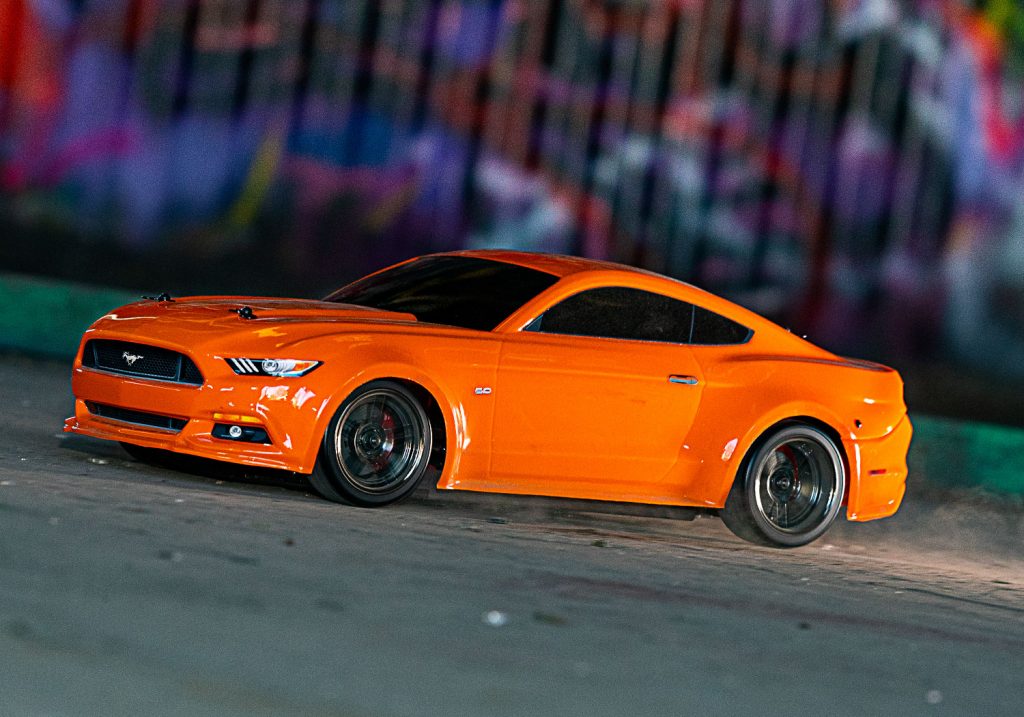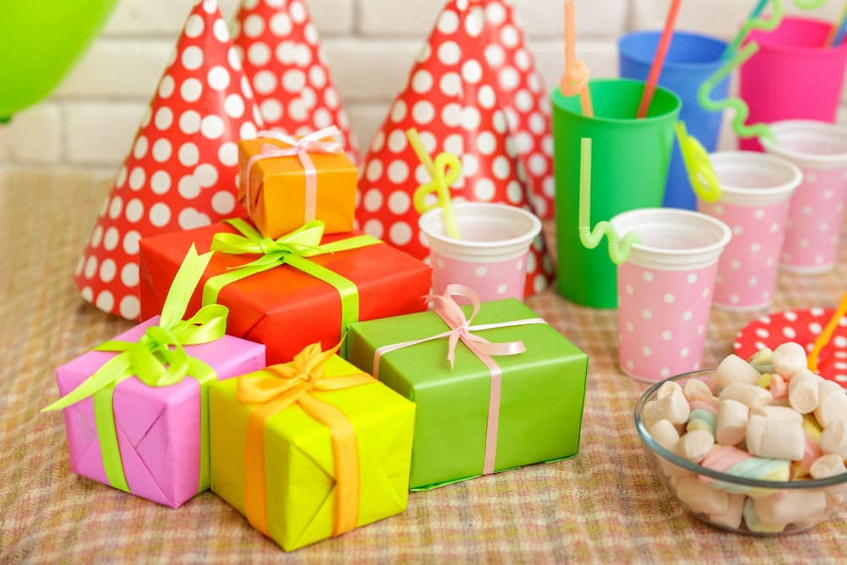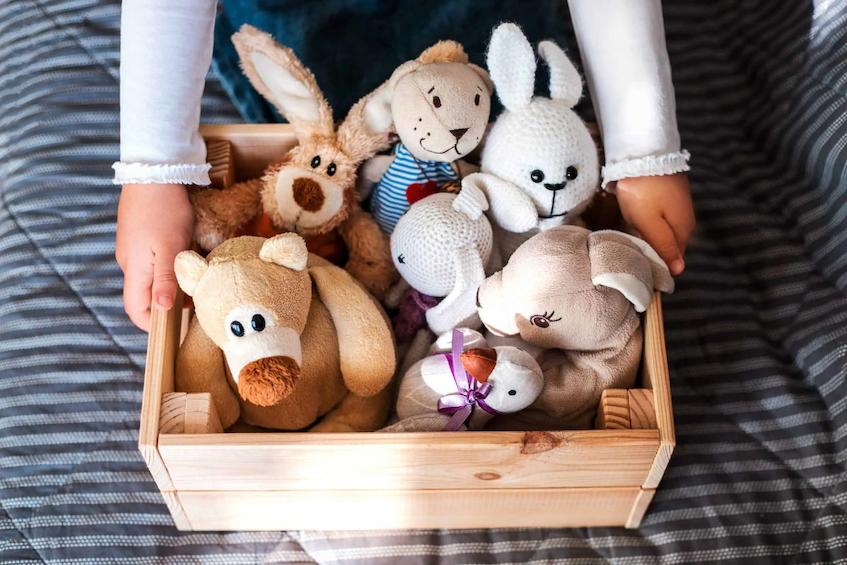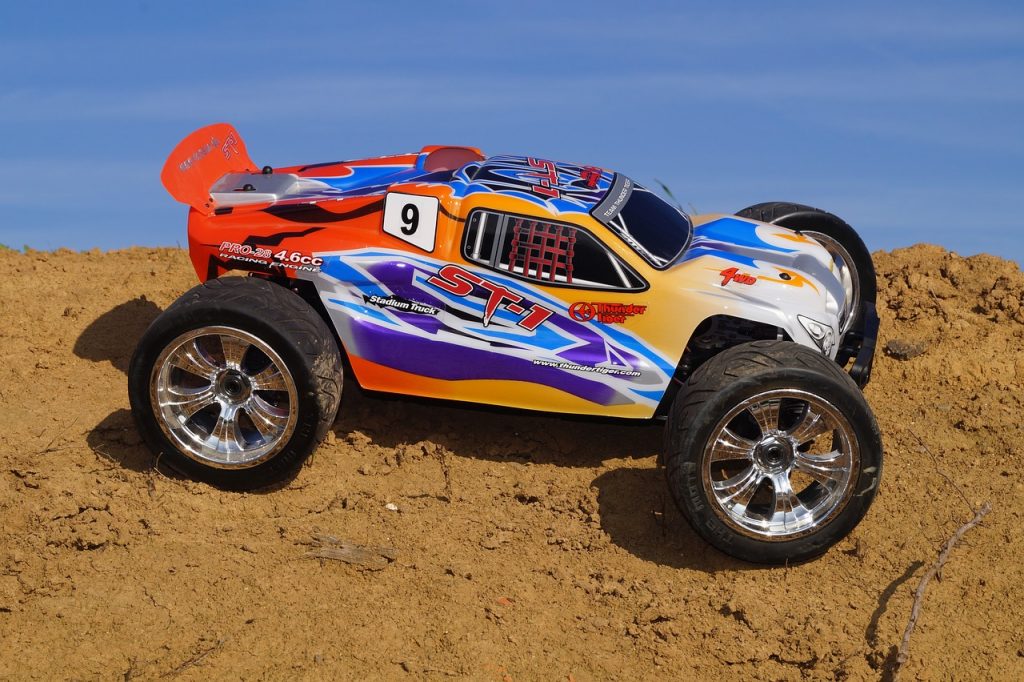A Guide to STEM Toys for Kids: Igniting Curiosity and Learning Through Play
In a world brimming with enticing activities for our little ones, it’s easy to get lost in the sea of options. Activities like skateboarding, puzzle-solving, and imaginary play are the building blocks of joyous discovery. However, STEM toys for kids stand out as both captivating and educational items. These ingenious playthings spark the flames of curiosity and lay the foundation for learning through the sheer magic of play.
Read MoreThe Whats and Hows of RC Drift Cars
There’s something incredibly fun in throwing a car sideways around a racetrack with the front in oversteer and wheels pointing in opposite directions on the turn. This is drifting. Drivers use the throttle, brakes, clutch and just the right amount of steering input to get the rear wheels to lose traction and thrust the car into hairpin turns or doughnuts at speed. Drifting might not be the fastest way around a racetrack, but a drift car in the right hands comes close. Here you’re looking at rear-wheel-drive manuals with limited-slip differentials and coilovers. Or the likes of Nissan Skylines and Silvias, Toyota Supras, and Mazda RX7s and what started the whole drifting craze, back in 1990s Japan.
Read MoreModel Rocket Building: A Great Hobby for the Whole Family to Enjoy
In the fast-paced grind of the everyday 9 to 5, there’s little time to unwind by sharing precious moments and experiences with loved ones. As busy as life gets, hobbies allow you to slow down and take a break for a bit. They nurture your creativity and allow you to build new skills. They also establish new relationships with like-minded people or grow those that already exist.
Read MoreSpark Imagination: 3 Birthday Gift Ideas for Creative Kids
Whether you’re a parent, a bigger sibling, or a family friend, you probably want to come up with a unique gift idea for your favourite little bug’s birthday this year. And instead of picking the typical plush toy or a chocolate arrangement, why not gift something interesting that will spark your little person’s imagination and creativity? If you’re already struggling, don’t worry, we’ve got you covered. Here are a couple of lovely gift ideas to let your favourite little bug unleash their creative side.
Read MoreOutside Playtime: How to Choose the Right Outdoor Toys for Your Kids
Play is an important part of every child’s proper development. Through play, kids learn a diverse range of skills, both physical and mental. From learning to socialize and fully engage with other kids, to developing and strengthening their physical bodies and emotional well-being. However, the time and age we live in have made it hard for many parents to motivate their kids to get outside and play with other kids. This is mostly due to the fast technological advancements that have a huge impact on how we operate on a daily basis.
Read MorePlush Toys: The Cuddly Companion for Every Aspiring Little Ballerina
The wardrobe essentials of a ballerina might be many and quite significant for them, but the truth is that little aspiring ballerinas can benefit a lot from having plush toys as well. After all, even though ballet might be a serious sport, don’t forget that your ballerina is just a child and as such will enjoy this activity a lot more if you make it as fun as possible for her.
Beginner’s Guide to RC Cars: How They Work and the Different Types
If you’re looking for an exciting hobby that will help you escape your everyday life, look no further than remote control (RC) cars. Though you may think of it as something for kids at first, the truth is that adults also indulge in running an RC car. There is no age for starting to enjoy RC racing. You can either go for ready-to-run cars from any RC shop or online hobby shop or build your own model car by choosing the right kit and tools.
How do I choose an RC car? – you may ask. To help you make a good choice, there are a few things you should know that will help you understand RC cars better.

How Does an RC Car Work?
Regardless of the car type, all RC cars have several basic components that are crucial for the car to run. There are 4 basic components that every RC car needs to have to work properly. Let’s check them in more detail.
Transmitter
You control the RC car with a transmitter. The transmitter works by sending radio waves to the receiver in the car. More precisely, the transmitter is the remote control, which is powered by batteries and has control buttons or keys that you use to send signals to the receiver.
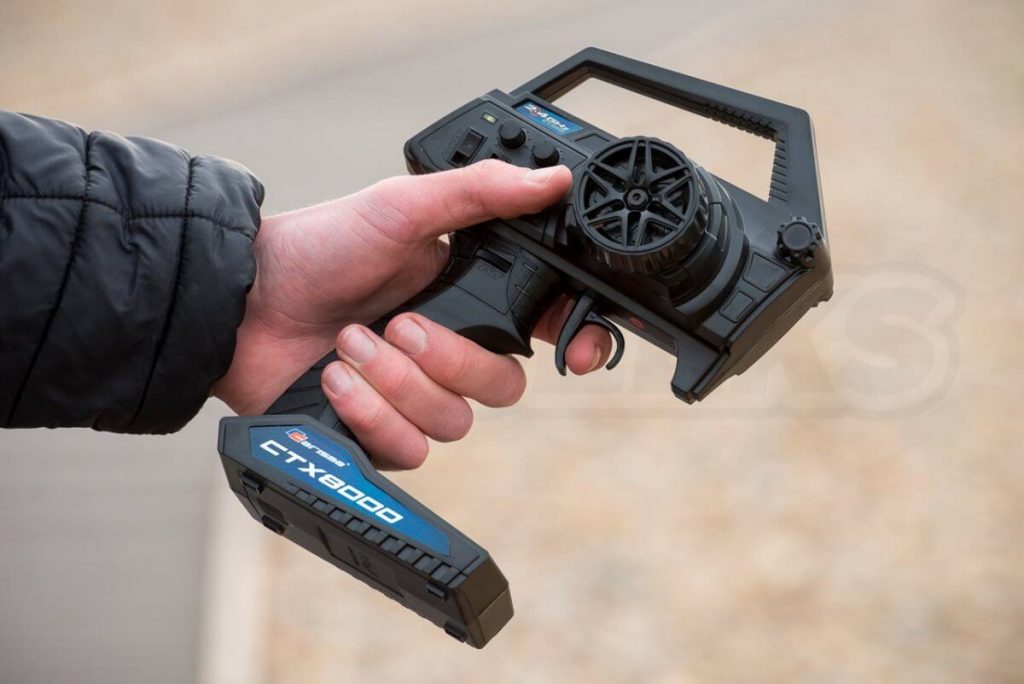
Receiver
This component is the antenna that you see on the car. Every car has a receiver, regardless of whether it’s a basic toy or a professional racing RC car. In fact, the antenna is only one half of the receiver, while the other half is the circuit board located inside the car. These two receive the signals from the transmitter together and allow you to control the car.
Motor
The motor is the powerhouse of the car as it allows you to move it. Some more complex RC cars need more than one motor since they do a lot more than just move and turn.
Power Source
For the 3 above-mentioned components to do their job, every RC car needs a power source. From basic rechargeable batteries in some simpler cars to gas-powered engines in advanced models, an RC car can’t be run without a good power source.
Types of RC Cars
Buggy
If you can’t decide between on-road and off-road racing, any well-stocked RC shop offers a range of buggies that would be a great choice for you. Buggies are designed to work both on smooth surfaces and uneven terrain. They are the second-fastest on-road cars, but the slowest off-road, due to their low wheelbase.

Truggy
If you like the idea of an RC buggy, but you are looking for something more rough and sturdy, an RC truggy is what you should look for. In fact, truggies are more for off-road, but they can still be used on smooth surfaces. They take the frame of a buggy but put monster truck tyres on them.
Trucks
Trucks, or also known as monster trucks, are excellent off-road but pretty slow on-road RC vehicles. If you want to make high speed turns, they may slip a lot. Get a monster truck if you like driving in the woods or in the grass.

Street Car
If you want something average, go for a street car. This type of RC vehicle is meant to be driven across smooth surfaces. So, if you are looking for something that you can drive in your backyard, this may not be the right choice for you.
These cars may be powered by both electricity and nitro fuel. Electricity-powered models are as small as 1/10 or 1/12 in terms of scale. Nitro-fueled models, on the other hand, are 1/8 or 1/10.
Street cars have a tiny shape and wheels. This design allows them to reach super high speeds, thus making them wildly popular with racing enthusiasts.
Drift Car
Drift cars are pretty similar to street cars, with the main difference being their slicker tyres. These cars are slightly modified in terms of components in order to allow the car to be light enough to drift easily.
Drift cars are great if your regular cars bore you and you want to drive fast. However, know that drifting is hard, so you may have some trouble getting used to it in the beginning.
Nitro Vs. Electric
There are 2 main types of propulsion for RC cars – nitro and electric cars. Nitro cars use miniature internal combustion engines that usually need a special brew of nitromethane methanol and oil. These engines require maintenance and servicing, so be ready to get your hands dirty. Plus, they make a lot of noise and for this reason, many tracks in suburban areas may not allow their usage.
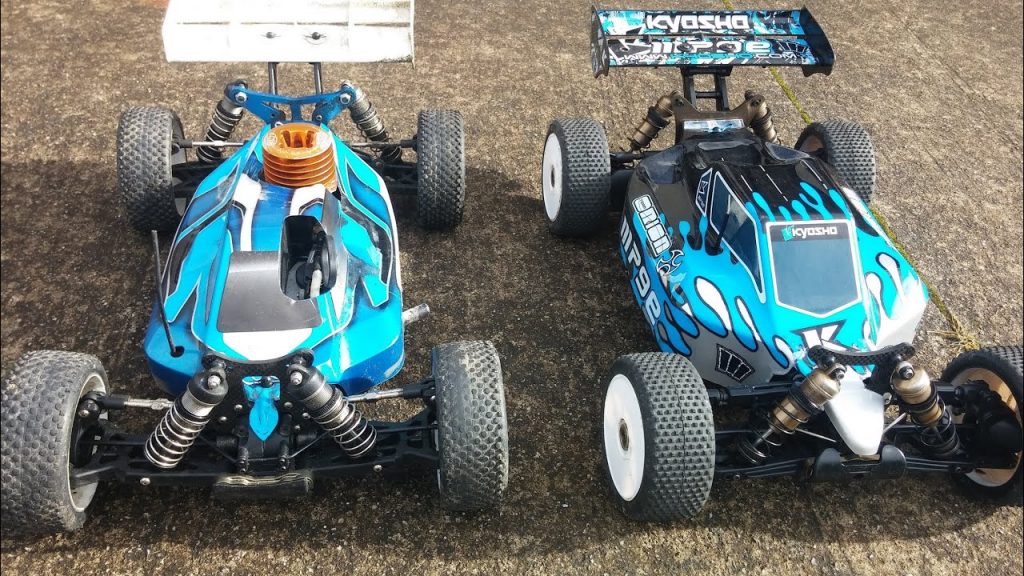
On the other hand, electric RC cars run on batteries, which is why they are cheaper. They generally have faster acceleration than their nitro counterparts. When it comes to maintaining an RC car, electric models require less maintenance than nitro cars. When looking for an electric RC car, you’ll encounter two kinds of electric motors available for them – brushed and brushless. Each type of motor has its own type of ESC (electronic speed controller). Typically, brushed electric motors and their ESC’s are cheap, but they are also quite inefficient and lack power. On the flip side, brushless motors are powerful, efficient, fast, and last much longer than their brushed counterparts. They don’t have an expiration date, as opposed to brushed motors that typically last about 6 months to a year. When it comes to the visual characteristics between the two, brushless motors are completely sealed and have 3 wires, whereas brushed motors have ventilation holes and 2 wires.
Cuddly Buddies: The Benefits of Playing with Plush Toys
One of the very first toys a child receives is often a teddy bear or some kind of stuffed animal. But these soft, plush animals are more than just a toy. For a young child, they become instant friends – companions that are always available to play with when mummy and daddy are tired or busy. So, over time, kids can grow quite attached to their plush toys. But what makes these toys so special and different from all the other play items in a child’s bedroom? To answer that, here are some of the reasons plush toys are especially beneficial for children to play with.
Plush Toys Provide Instant Comfort

The greatest benefit of stuffed animals and other soft, cuddly plush toys is that they can ease stress and anxiety in young children. For babies and toddlers, the world can seem like a big and overwhelming place and having something secure and soft to hold on to can help them cope with their emotions. By cuddling with a stuffed animal, children can learn how to self-soothe instead of calling for mummy and daddy to provide instant comfort. What’s more, a child’s stuffed animal can be his/her own personal companion which they don’t have to share with anyone else. This can be especially beneficial for a child that splits the parents’ affection and attention with other siblings.
They Help Build Social Skills

In a child’s imagination, stuffed toys are animate creatures which they can interact with. So, when you see a child spending time with their favourite plush animal, it often looks like they’re having a conversation or playing different roles. Doing so, they often mimic everyday activities and some of the grown-up conversation they overheard. As a result, this pretend play can help children learn how to form social bonds and express themselves.
They Encourage Language Development

Besides bolstering social skills, pretend play with stuffed toys also helps develop speech and language skills. Just think about it. What encourages your child to speak more – Lego blocks or stuffed toys? The stuffed toys’ effect on language skills can start even when the child is a small baby. Seeing the distinct features of a face encourages babies to babble more which can help speed up the development of language.
They Teach Compassion & Empathy

Besides seeing them as friends they can play with, as children continue to grow, they start assuming the role of a caretaker for their stuffed toys. As they pretend to feed, clothe and bathe their stuffed animals, children learn how it is to nurture and care for others. As a result, this can help children become more considerate about the needs of other people.


